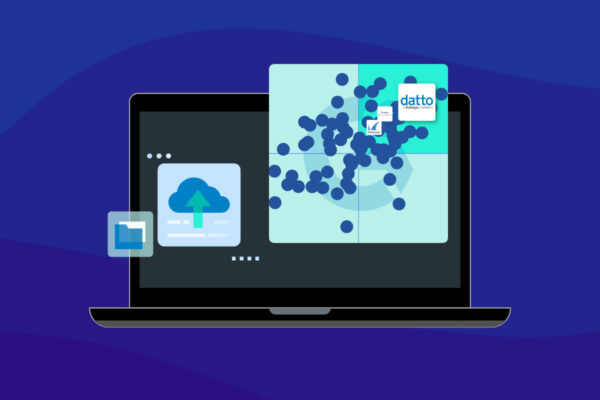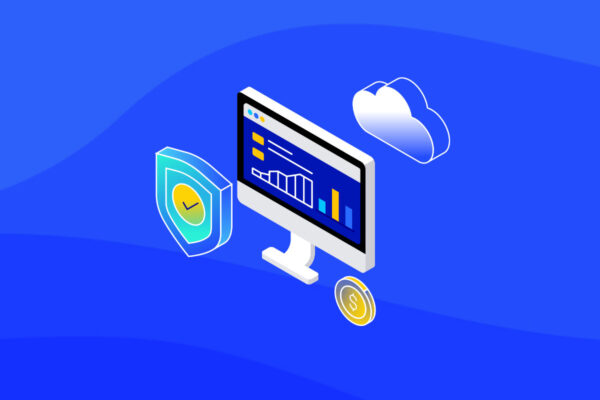Is your RMM doing enough? Here’s how to tell
When was the last time you evaluated whether your RMM is still the best fit? Many MSPs choose an RMM early on and stick with it because it’s cheap, familiar or “good enough.” Others are running a patchwork of disconnected tools just to get basic visibility across their clients’ environments. Either way, the outcome tends to follow a familiar pattern — your techs end up overworked, issues slip through the cracks and growth takes a backseat.
This blog breaks down what a high-performing RMM should actually deliver and why modern, integrated platforms like Datto RMM are reshaping how successful MSPs operate.
What is an RMM and why it should work harder than you do
An RMM can be defined as a solution that allows MSPs to monitor, manage and maintain their clients’ IT environments remotely.
But that’s just the start.
Your RMM should automate routine tasks, reduce ticket volume and help your team stay ahead of issues before users even notice something’s wrong. That’s where the real business value kicks in. Check out our infographic, Secrets of $10 million+ MSPs: How top performers drive growth.
Many MSPs still use on-premise RMMs that require local servers, constant manual updates and heavy maintenance. These tools may have worked a decade ago, but they weren’t built for the speed and flexibility today’s MSPs need. They’re hard to scale and even harder to manage efficiently.
In contrast, modern cloud-based RMMs cut the overhead and eliminate complexity. They update automatically, scale effortlessly and give you full visibility and control from anywhere. No hardware headaches required. The outcome isn’t just control over endpoints — it’s control over your time, your team’s bandwidth and your business trajectory.
The bottom line? A good RMM not only helps you manage endpoints but also runs a stronger, more profitable MSP. Check out the RMM made MSPeasy eBook for a closer look at what sets advanced RMMs apart.
The features that make or break your RMM
Many MSPs struggle not because they don’t have an RMM but because they’re using one that can’t keep up with the demands of the job. Here are four key capabilities your RMM should have and can transform the way you work:
1. Integrate with the tools you already rely on
If your RMM doesn’t connect seamlessly with your PSA, backup, AV and security stack, your techs are doing extra work for no reason. They’re jumping between tools, re-entering data and losing context, all of which slow things down and introduce risk. A modern RMM should centralize the tools you use most, streamline communication between systems and give your team a single source of truth. The result? Smoother workflows, fewer mistakes and faster resolution times.
2. Automate the work that slows you down
Manually patching 200 endpoints? Still rebooting machines one by one? That’s the time your team will never get back. Smart automation lets you turn repetitive maintenance into scheduled, no-touch processes. It’s how high-performing MSPs protect their margins, serve more clients and prevent burnout on the support desk. Even better, some RMMs come with drag-and-drop automation builders or ready-to-go scripts — no coding required. You don’t just save time; you build consistency across every client environment.
3. Onboarding and support — get up and running fast
Buying a powerful RMM is one thing. Getting it configured properly and delivering value? That’s where most vendors fall short. Too many MSPs are left to figure things out alone leading to slow onboarding, poor configuration, missed functionality and a steep learning curve for your techs. The right RMM partner will walk you through setup, provide real support and make sure you’re seeing the impact of your investment from day one. Strong onboarding isn’t a nice-to-have. It’s what sets you up to win.
4. Drive operational efficiency and control costs
At the end of the day, your RMM should reduce overhead, improve service delivery and make it easier to scale. If you’re constantly reacting to issues, spending too much time on manual fixes or patching holes between tools, your RMM is holding you back. A smart RMM sharpens visibility, shrinks ticket queues and eliminates the busywork that bogs your team down. That’s how real MSPs move from reactive to proactive, and from stressed to scalable.
What makes Datto RMM different
At a glance, most RMMs look similar. But once you dig into the day-to-day experience, the workflows, the integrations and the automation, Datto RMM stands apart. Datto RMM isn’t just built to manage endpoints — it’s built for MSPs who want to run leaner operations, deliver faster service and scale without the usual friction. It brings together the core features you need with the integrations that actually make your work easier. Here’s what that looks like in action:
- Datto RMM + Autotask (PSA)
When Datto RMM detects an issue, it automatically creates a ticket in Autotask. Your techs get context-rich alerts and can jump straight to resolution. There is no need for extra clicks or data entry.
- Datto RMM + EDR
Security shouldn’t be a separate layer — it should be baked into your management flow. Datto RMM integrates with Datto EDR to detect threats early and kick off automated responses, minimizing manual intervention and maximizing endpoint protection.
- Datto RMM + Microsoft 365
Get full visibility into Microsoft 365-connected devices, manage user access and apply policies directly from Datto RMM. It’s streamlined endpoint and user management without switching between dashboards.
- Datto RMM + Datto BCDR
Need to verify a backup or trigger a restore? You can do it without leaving the RMM interface. This direct link into Datto’s BCDR platform gives you real-time backup status and instant recovery control when you need it most.
- Datto RMM + AV
Automate virus scans, monitor endpoint health and take quick action from a central place. Datto RMM centralizes security operations, so nothing slips through the cracks.
- Datto XML feeds
Get real-time insights into system health, alert history and device behavior. Datto’s XML feeds keep your team one step ahead with continuously updated data. No guesswork — just visibility that drives smarter decisions.
These integrations are workflow multipliers. They help your team move faster, deliver better service and keep costs under control without sacrificing quality. Curious how other MSPs improved operations with a Datto RMM? The RMM made MSPeasy eBook includes firsthand examples and success stories you can learn from.
Build the MSP you set out to run
You started this journey to build something great: a business that runs smoothly, supports happy clients and grows profitably. That’s not a pipe dream — it’s what the right RMM helps make possible. With better automation, smarter integrations and a vendor that actually supports you, your team can get more done with less hassle. So, if your current RMM is just “getting the job done,” ask yourself: is it really serving your business or just helping you survive?




